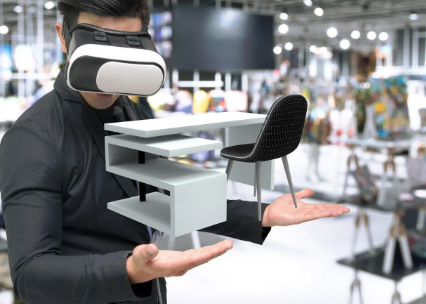How Virtual Reality Is Enhancing the Retail Experience

Virtual reality is transforming the retail landscape by offering immersive shopping experiences that engage consumers more deeply. This technology enables virtual fitting rooms and interactive product demonstrations, which help shoppers visualize products before purchase. As a result, businesses report reduced return rates and increased customer loyalty. However, the impact of these innovations on consumer behavior remains to be fully understood. What other changes might arise as virtual reality continues to evolve in the retail sector?
Immersive Shopping Experiences
In recent years, a significant shift has occurred in the retail landscape, with many brands embracing immersive shopping experiences to engage consumers more effectively.
Virtual storefronts have emerged as platforms that utilize sensory stimulation, allowing shoppers to explore products in a dynamic environment.
This approach not only enhances consumer interaction but also drives sales, showcasing the power of innovative technology in shaping retail strategies.
Virtual Fitting Rooms and Personalized Styling
Virtual fitting rooms are revolutionizing the way consumers approach online shopping by offering personalized styling solutions that enhance the decision-making process.
By utilizing virtual try ons, shoppers can visualize clothing within their digital wardrobes, leading to increased confidence and satisfaction.
Data indicates that users experience reduced return rates and improved purchase decisions, illustrating the effectiveness of these immersive technologies in modern retail.
Interactive Product Demonstrations
A significant transformation in retail is occurring with the rise of interactive product demonstrations, which engage consumers in a dynamic and immersive shopping experience.
These virtual showcases allow customers to explore products interactively, leading to enhanced understanding and satisfaction.
Data indicates that such experiences significantly increase customer feedback, ultimately informing product development and marketing strategies, thereby fostering a more responsive retail environment.
Enhancing Customer Engagement and Loyalty
Interactive product demonstrations not only enhance product understanding but also serve as a foundation for building deeper customer engagement and loyalty.
By integrating customer feedback into virtual reality experiences, retailers can tailor their offerings, creating personalized loyalty programs that resonate with individual preferences.
This data-driven approach fosters a sense of connection, encouraging repeat purchases and nurturing long-term relationships between brands and consumers.
Conclusion
In conclusion, virtual reality serves as a bridge, connecting consumers to a more engaging and personalized retail experience. By harnessing immersive technologies, retailers not only reduce return rates but also cultivate customer loyalty akin to a garden nurtured by attentive hands. As brands adapt to consumer feedback, they are not just selling products; they are crafting relationships that resonate beyond the transaction, ultimately reshaping shopping behaviors and paving the way for a more interactive and satisfying retail landscape.



